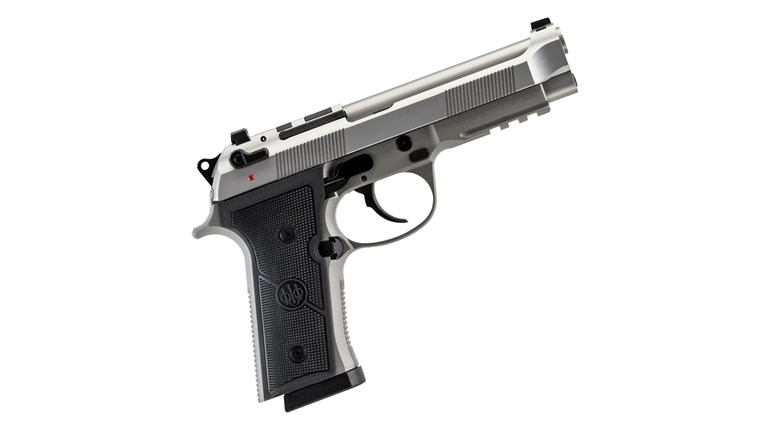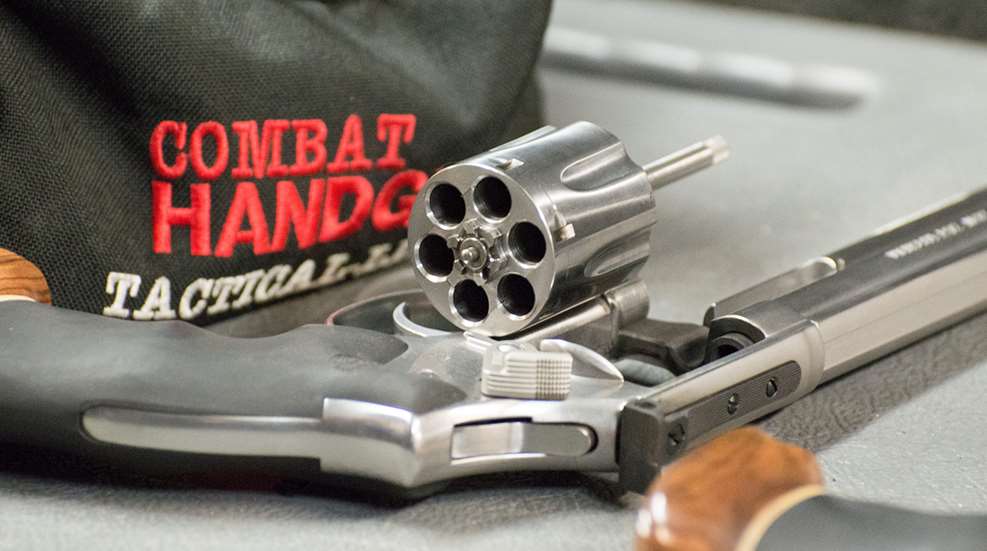
Josh Lentz's resume includes four IDPA National Championships, five ICORE World Championships, not to mention 55 assorted regional titles. Lentz, a self-proclaimed "blue-collar worker" from Northampton, Pennsylvania, is a revolver specialist.
In 2003, after attending a local competition, he was instantly hooked on the shooting sports. It wasn’t long before he found his passion for revolver; the challenge was unlike anything he had ever done before. Lentz, not the type who shies away from hard work, started practicing diligently and began the groundwork for a new career as a competitive shooter.
Lentz also helps out at his local gun club as a range officer, running the timer and scoring targets. This allows him to assist new competitors, by showing them better gun handling skills, and how to shoot stages more efficiently.
The Team Smith & Wesson member was kind enough to share some tips for revolver competition with SSUSA.
1) Stance
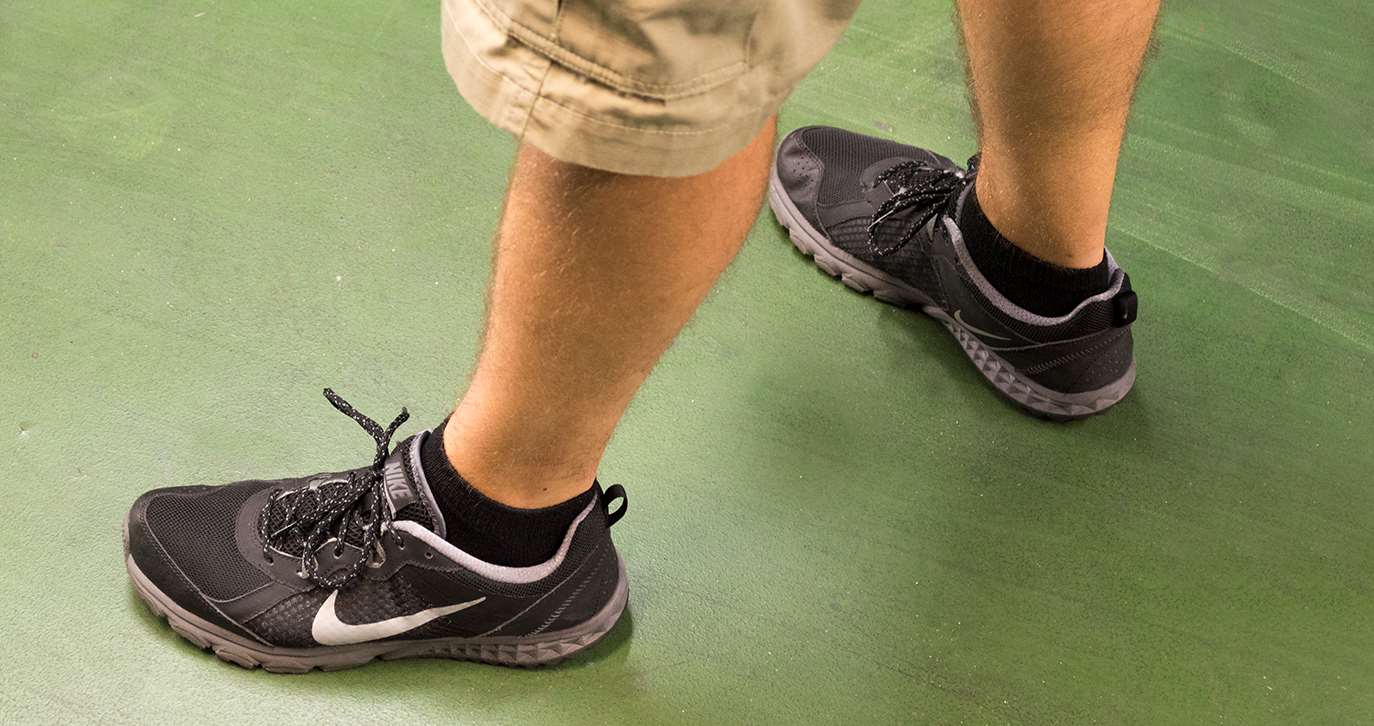
For a good stance, you want to have your feet at a ten o’clock and four o’clock position position—your left foot at ten and your right foot at four, or your right foot at one and your left foot at seven if you are left-handed. Next, you want to have your feet shoulder-width apart, maintaining a balance. This stance works much better than your feet being close together, which is the source of rocking.
You want to be relaxed and natural with your stance, as if you are talking to someone in everyday conversation. This is one of the fundamentals that you want to ingrain in your subconscious memory, to always be relaxed on the range, ready to move. In the ten and four position you can move all over with no problems. Keeping your feet together not only is awkward but it prevents you from doing your job at the match—acquiring the targets.
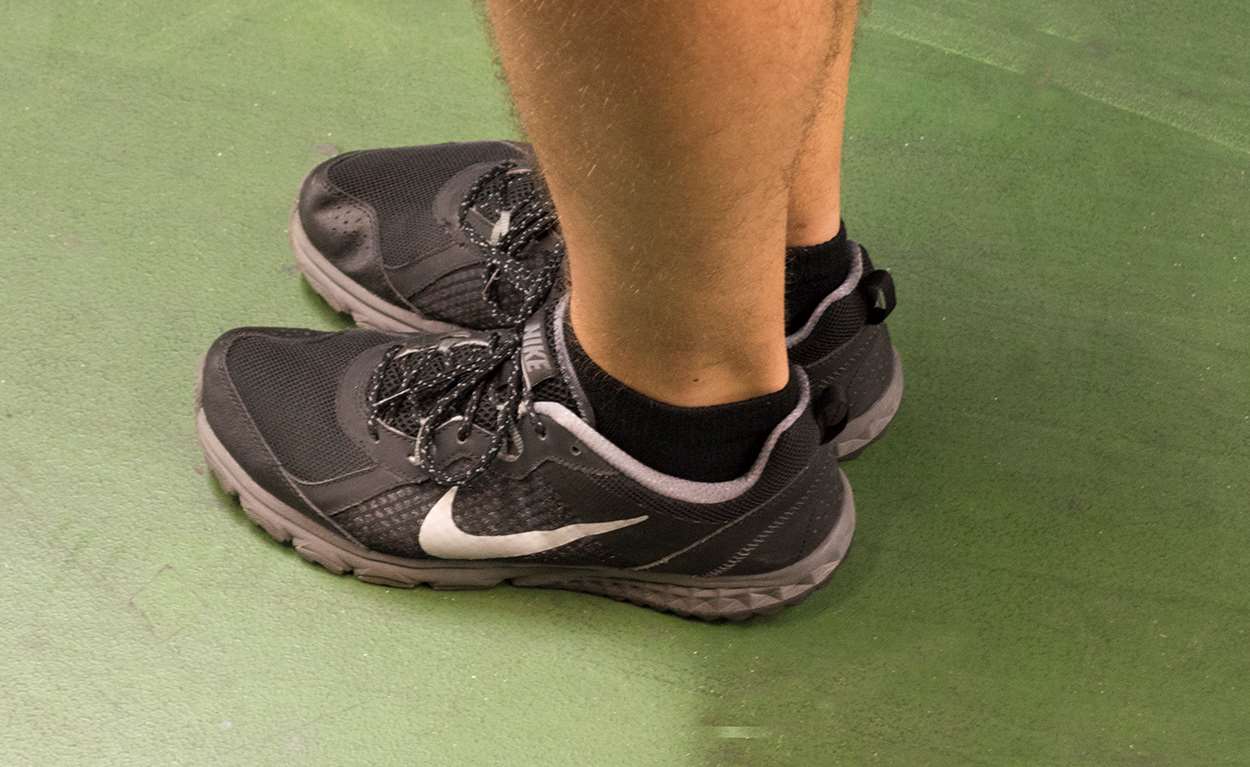
2) Revolver Grip
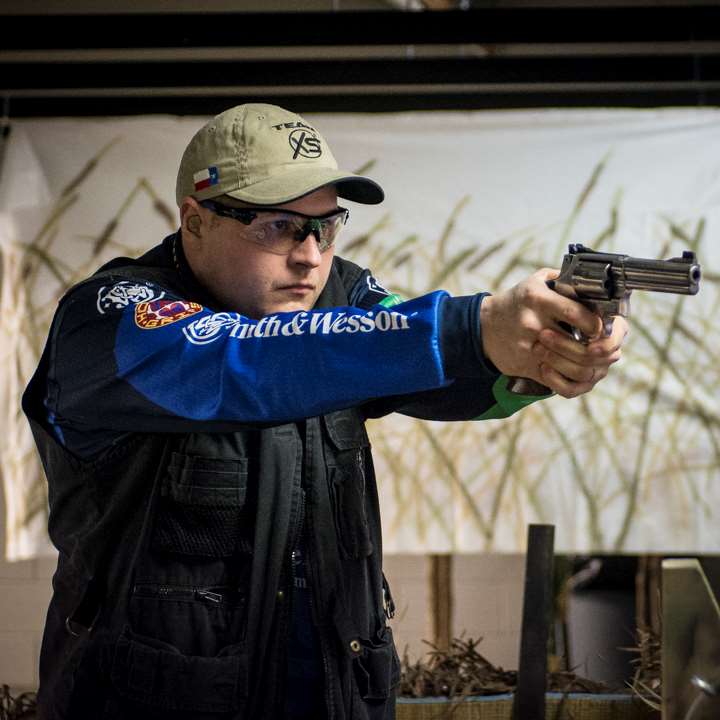
A good revolver grip has your hands high on the back strap. However, if the spur is there you might consider cutting it off, because it will restrict the full motion of the hammer and prevent the revolver from rotating or working. An ideal revolver grip has your hands on the gun without any interference.
Now, there’s two kinds of grips; you can have thumbs forward or thumbs wrapped, which is how I shoot the gun. Grip one: you want to get a high grip, wrapping your thumbs and keeping the revolver square to the target. Use the good stance you learned earlier and try to approach and present the gun like that consistently. Additionally, you want good stocks for a revolver because everybody’s hands are different and finding the right stocks for your revolver is a huge advantage. This cannot be stressed enough—you can have two of the same exact revolver stocks and they will feel completely different from one another.
For grip two, with your thumbs wrapped, 30 percent of your strength comes from your right hand and 70 percent comes from your support hand (this applies for both grips). You can’t grip the gun hard with the right hand because the trigger finger has to move. So when you come up, you want to have the 30 and 70 percent grip and mash it in there, lock in your thumbs and squeeze the trigger the same every time. And ultimately, you want to get a high grip because the gun is like a lever. If you get a low grip, the gun will really recoil. If you use a higher grip, the gun itself isn’t going to recoil as much.
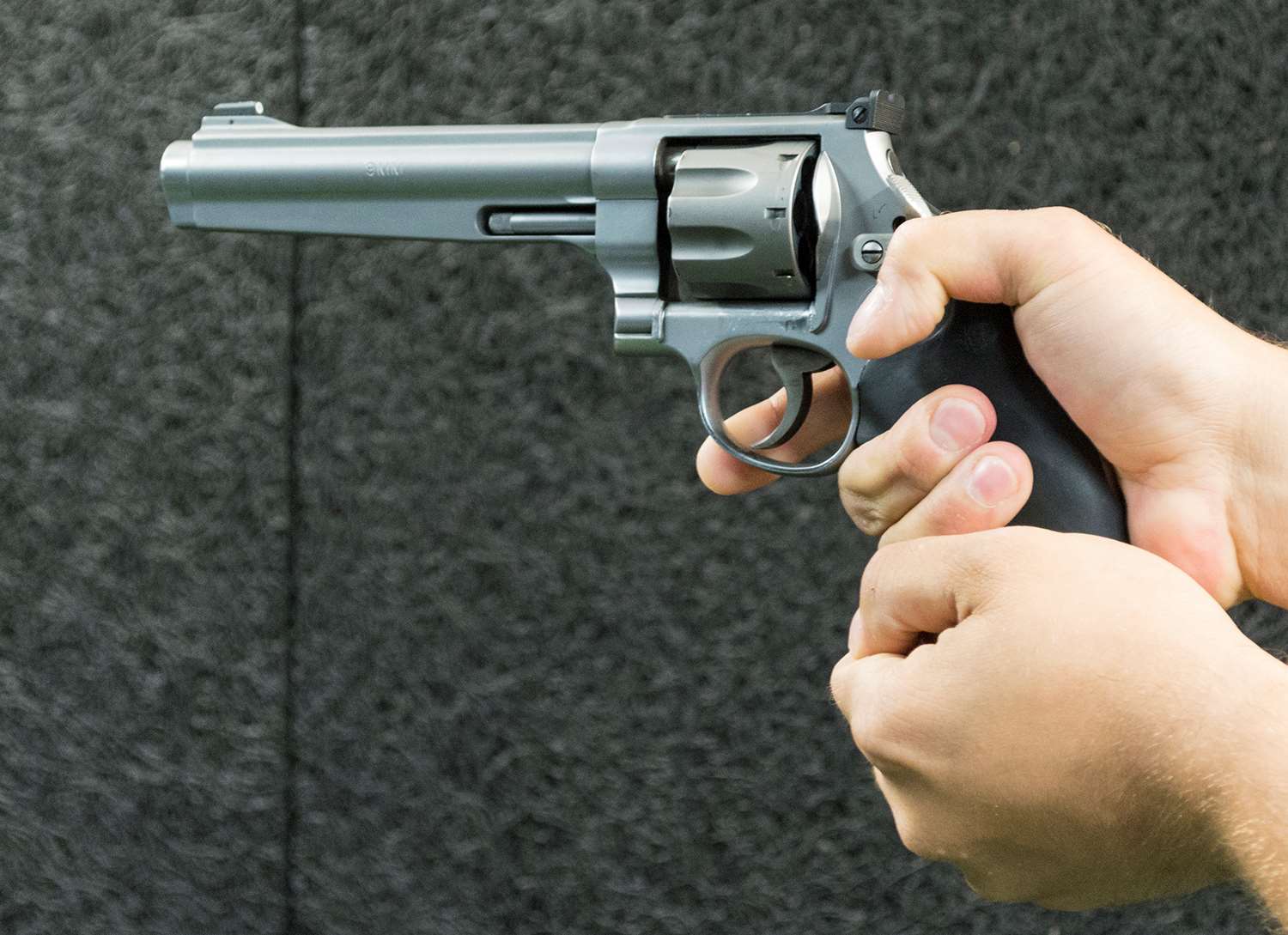
For competition, you have to have a certain power factor. I’ve worked really hard on my grip and when I come down on the gun and grip it like I want to, the muzzle doesn’t move. Ninety-five percent of the time I can get the same grip every time, the other five percent I’ll get a bad grip on the gun then muster through the first six to eight shots. During reloads, I move my hand to get the grip I want. The grip itself is 90 percent of shooting because you always want to grip the gun the same way every single time.
3) Sight Picture (iron sights and optical) and Target Acquisition
For a great sight picture, you have your rear sight and your front sight in front of you. You want to have your front sight horizontally even on the top—centered up in the rear notch. You definitely do not want the front sight higher than the rear blade, and you want it centered. Also, the front sight should be crystal clear enough to pick out a hair, whereas the rear sight should be blurry along with the targets, so when you’re looking at the targets it should only be an outline.
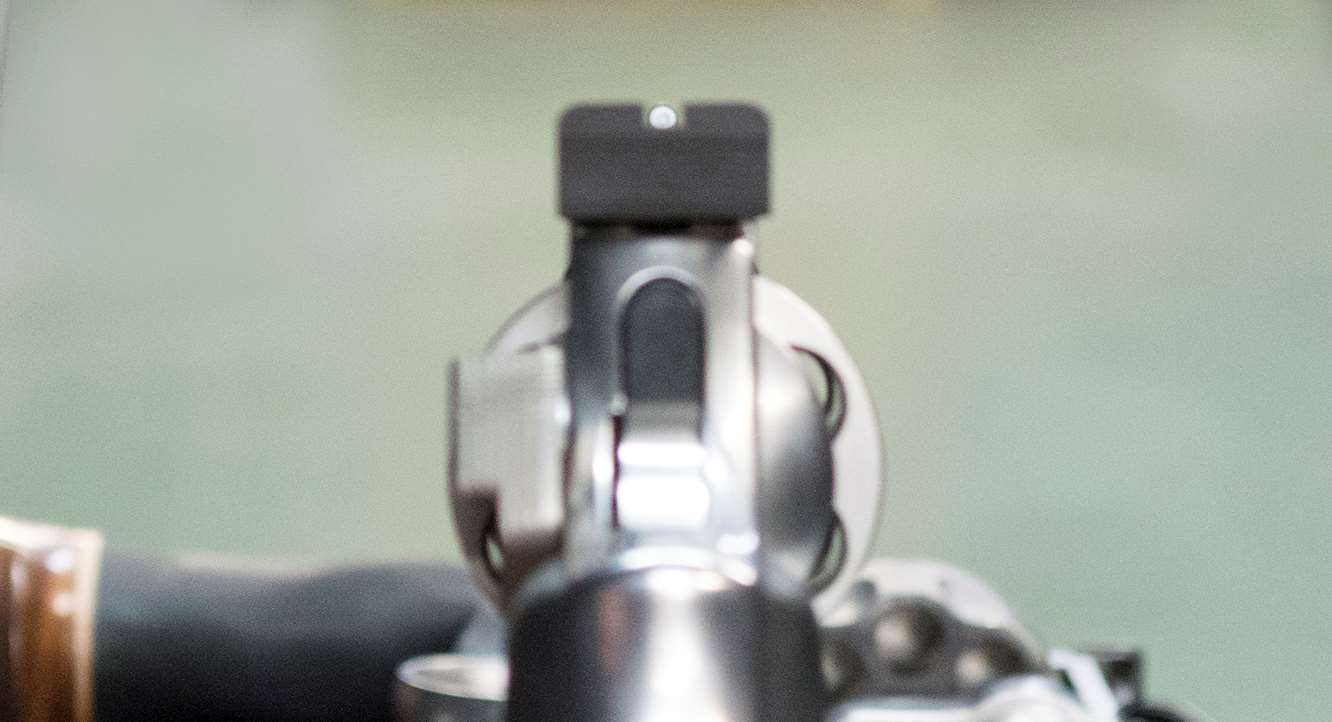
Some light will be on each side, since the front sights are usually narrower than the rear blade’s width. Therefore, you’re going to see light in there and your job is to make sure that the light on both sides is of equal distance. The first shot is always going to be the hardest because you have to line it up and your eyes have to lock into that picture. So once you have it on the first shot, you’re locked in like a radar missile. When you come up, find the picture and pull the trigger, everything stays in the notch during the trigger pull. It’s the moving around there that you have to control, even at my level. What I’m trying to do is take my shot only when it’s perfectly lined up. When shooting do your best to make sure the trigger breaks when the front and rear sight are aligned correctly.
There is a lot going on in a sight picture. It can always be worked on during drills and there are a lot of variables. You need the right height, have it centered up, and you have to pull the trigger the same every time. I’ve shot over 250,000 rounds and I am still working on my perfect sight picture. On some days you obviously see much better than others. My eyes are better in-tuned with my body and I just have better visual days than others. Some guys say you’re going to see the sights differently according to the time of day due to the sun.
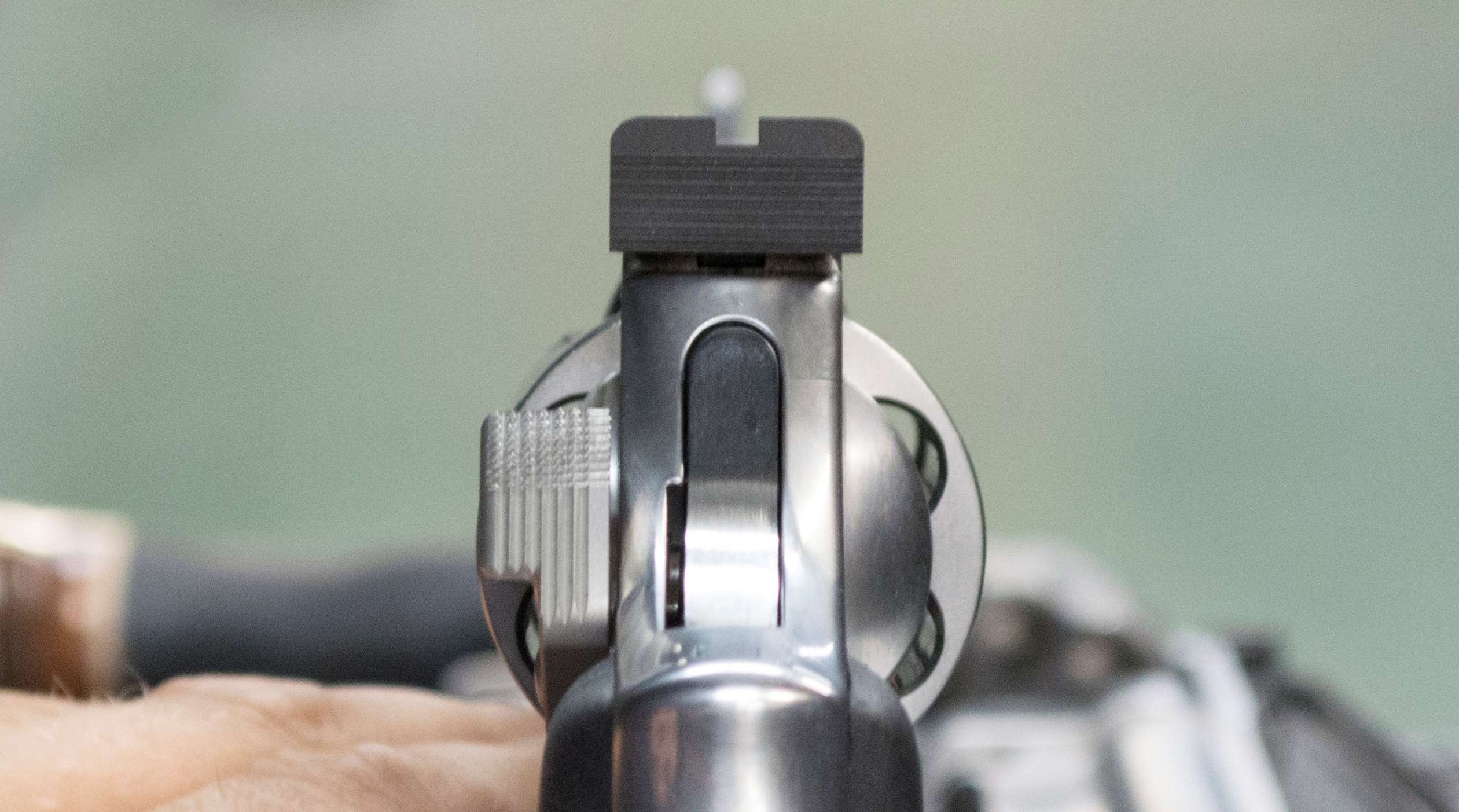
Sight picture also depends on what type of competition you are shooting. Most events I’m in, (outside the Bianchi Cup) are about speed. You just have to hit the target and that’s it. At a match like Bianchi you are going for a perfect score every time, so you need to make sure you are automatic in lining up your sights. Also, I’m going to put more in to my sight picture for a harder target.
When I compete I have two targets; instead of far or near targets, I have big and small ones. If it is a big target, I put minimal sight picture into it. If my target’s small, I’m going to take my time, line the sights up perfectly, take one perfect shot and move to the next target.
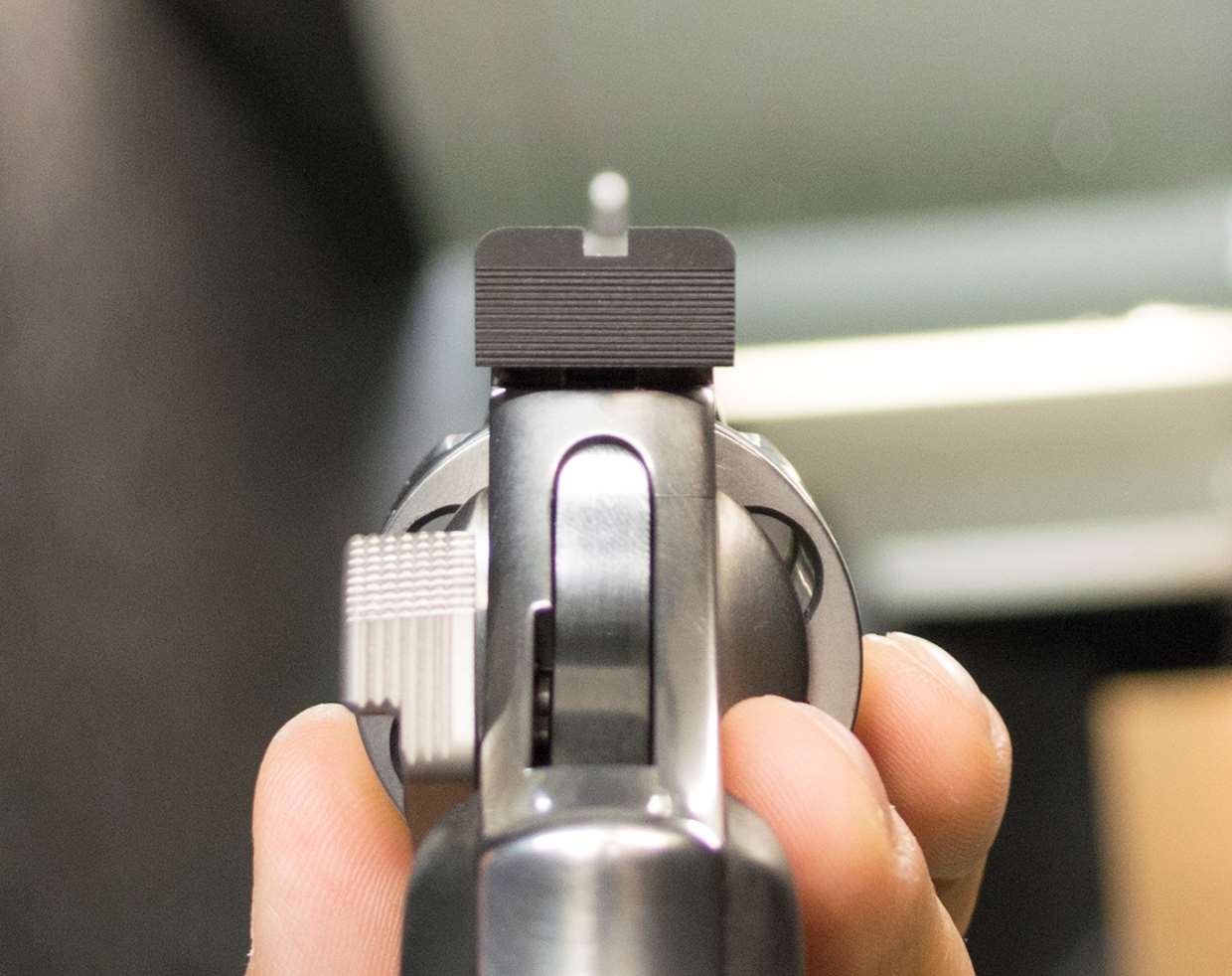
4) Trigger Control
If you have two of the same gun, both with roughly a six-pound trigger pull you can actually feel a difference. Even two of the same exact models can have totally different trigger pull and feel. This is why trigger control is so important.
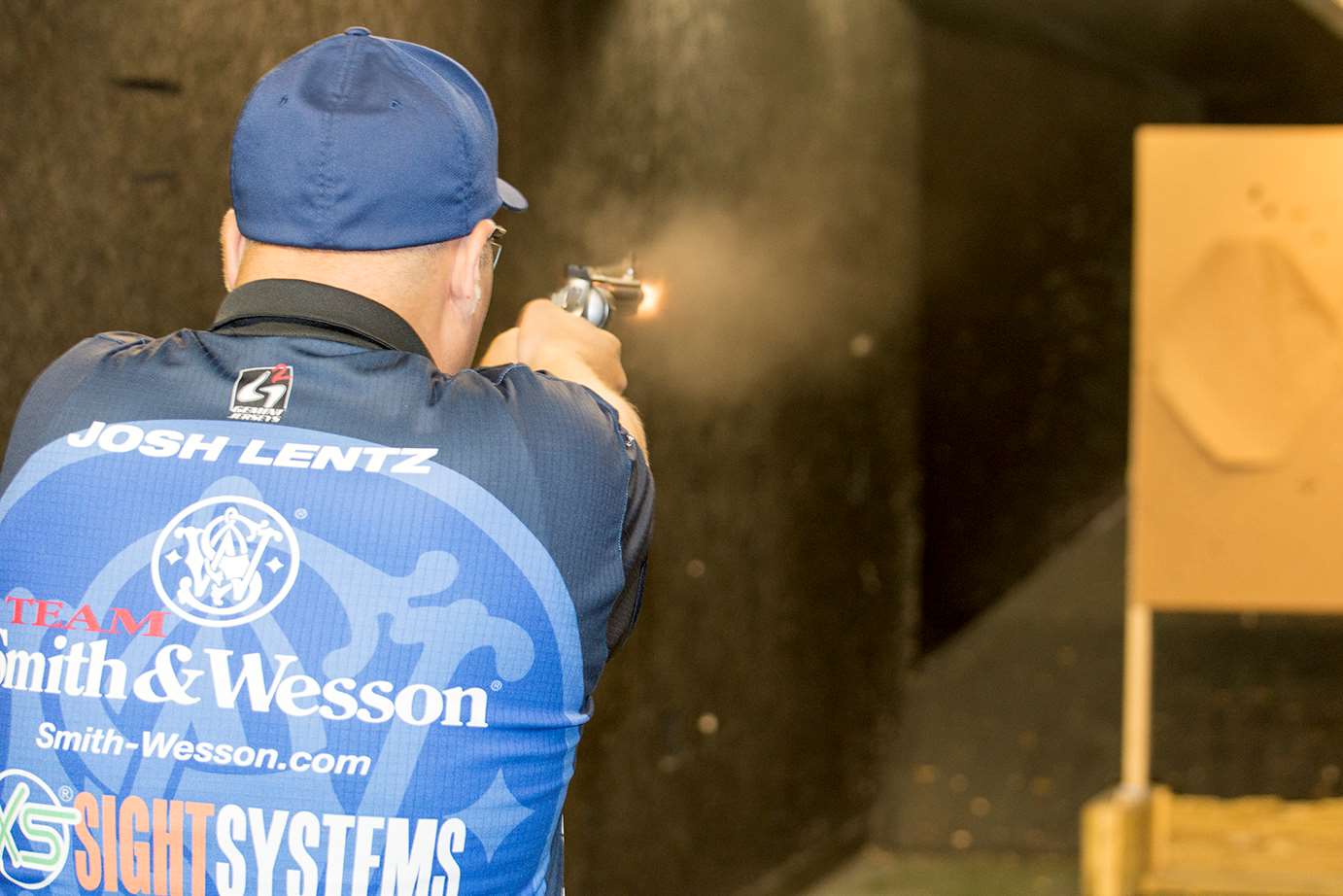
You want to be high on the back strap, and then you want your right hand to just come down on the trigger naturally. Grip and trigger pull work hand-in-hand. Your trigger finger should be halfway on the pad, because if you get too far into that first joint you’re probably going to pull the shot. You always want your finger on the trigger. You never want your trigger finger to come off the trigger (you never want to slap a revolver trigger) so when the shot breaks you want to ride that trigger up. It doesn’t want to come off and then go back onto the trigger. It just wants to be nice and loose and go up with the trigger. That’s the beauty of a revolver, the trigger will actually push your finger forward again.
5) Drawing from the Holster
For a good draw in either surrender or hands-at-side, you need to make sure your hand is high and on the grip when you grab for it—otherwise your hand will be low and not on the grip resulting in a bad draw. You also want to make sure that the holster is in the same position on the body every time, if it is not when your muscle memory kicks in your hand will be coming down on the gun different every time.
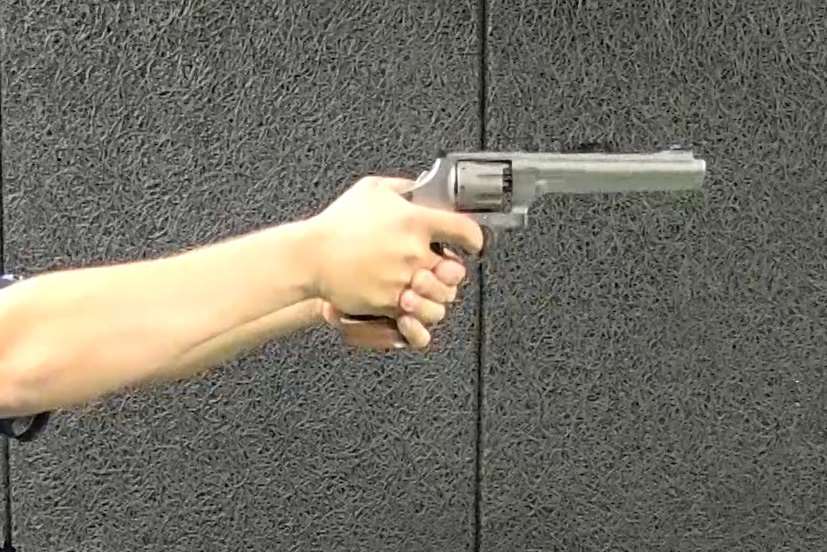
The draw should be broken down into three steps. First, when the buzzer sounds, the shooter should start with their strong hand towards the revolver, with the week hand in sync with the strong hand. Second, the revolver should leave the holster and be brought up to chest height—where the strong and weak hands meet establishing the grip. Third, the revolver should be pushed towards the target, and the shooter should start acquiring the front and rear sights so a sight picture can be established. These three steps should be performed in one continuous motion.














